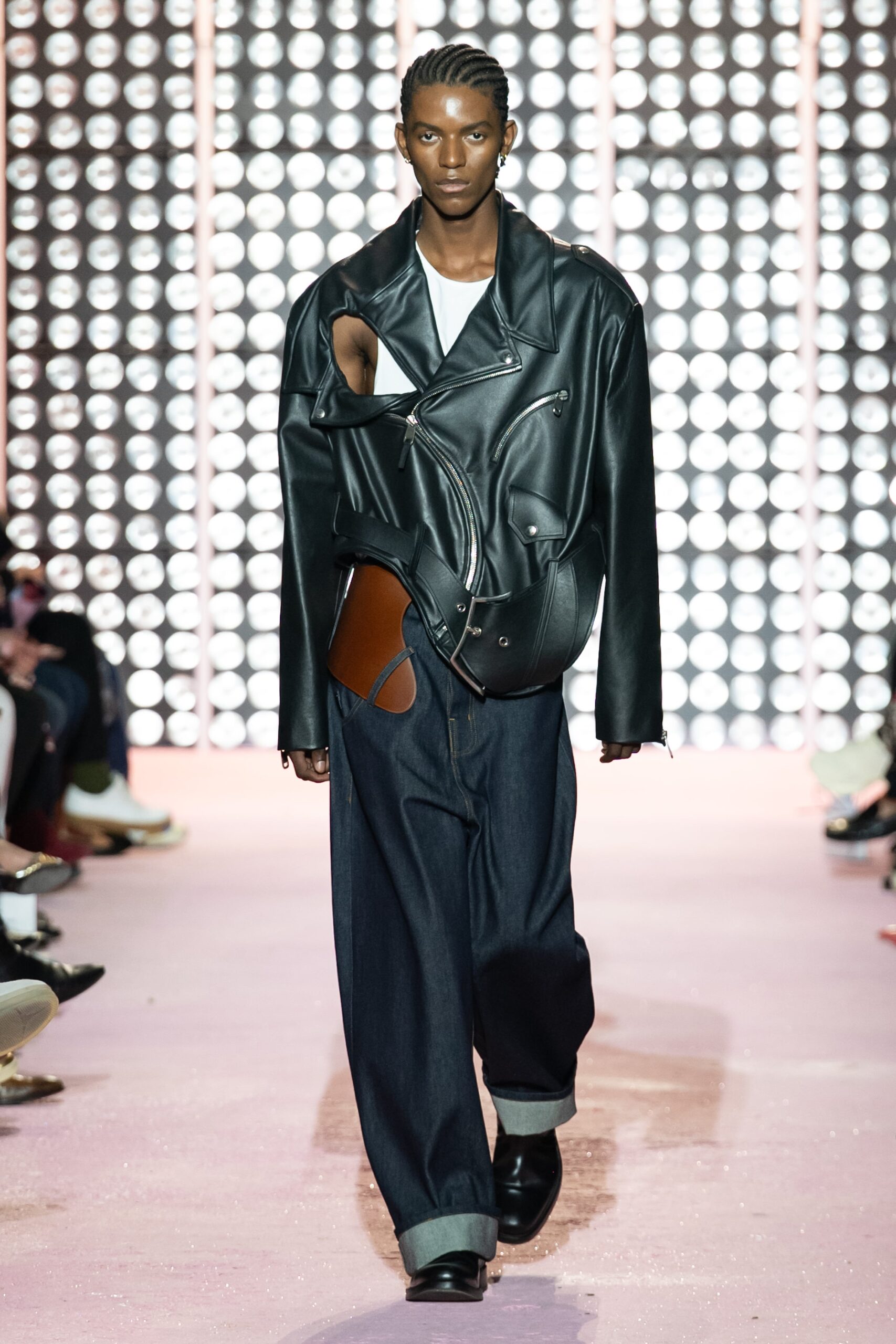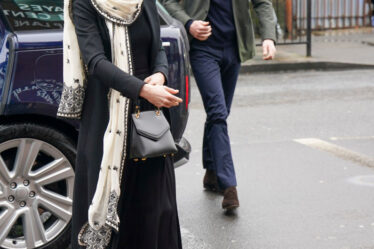
Hyères, FRANCE – Dolev Elron won top honours at the 39th International Festival of Fashion, Photography and Accessories in Hyères, in the south of France.
An Israeli fashion designer based in Stockholm, Elson currently works as a menswear junior designer for Swedish brand Acne Studios. His menswear collection presented at Hyères entitled ‘Casual Turbulence” featured wave-inspired shapes with a focus on denim.
On the eve of the ceremony, Elron said winning “would be beyond all my expectations” The designer impressed the fashion jury presided by Courrèges creative director Nicolas di Felice with his extraordinary craftsmanship and clear point of view.
To create his patterns, Elron uses digital software to deconstruct and twist iconic everyday garments like 5-pocket jeans or perfecto jackets while maintaining their functionality.
The Hyères’ festival came as the fashion industry seeks to chart a way forward amid slowing sales in key regions, as well as navigating creative confusion. Major trends like streetwear and luxury logomania have waned, giving way to a more sober, heritage-focused aesthetic at many high-end brands. Others have doubled down on attention-grabbing viral designs.
More than ever, finding the balance between uniqueness and commercial viability is key. Elron managed to do so by updating denim—a timeless favourite. Though he focuses on menswear, he said his clothes “should be for everyone, also for women.”
Igor Dieryck, last year’s Hyères winner has also been working to back up creative concepts with top-end execution and wearable product. He closed out the festival’s runway show with a collection produced using his prize winnings as well as support from Chanel’s Métiers d’Art craftsmanship division.
Dieryck works in the menswear studio at Hermès, and recently launched a capsule knitwear collection with Galeries Lafayettes. Dieryck said it was a “valuable exercise” designing at a lower price point and larger scale for his collaboration with the French department store. “When I design clothes, I hope people will wear them and feel something in them,” Dieryck said. “If an idea is super nice but unwearable, find a way to make it wearable.”
This year’s fashion jury focused on “the make, craftsmanship, clarity and sincerity,” of the designers’ collections, Courrèges’ Di Felice said.
Virality, on the other hand, was viewed with scepticism. “You can definitely feel how social media has changed the face of fashion,” said Di Felice. Attention-grabbing designs can boost brands’ visibility online, but can be “dangerous” for craftsmanship, he said.
Nevertheless, a viral collection that won the jury’s honourable mention was that of Tal Maslavi, an Israeli designer whose layer-cake derby shoes have won him social-media buzz and were an audience favourite. Aligning with his collection’s theme “Sugar Rush,” the models walked his show to the sound of wrapper and chewing noises.
Romain Bichot, a La Cambre graduate who works in the studio at Balenciaga, won the Chanel-sponsored Prix 19M des Métiers d’Arts and the Prix L’Atelier des Matières. Texas-raised Logan Monroe Goff won the Mercedes Benz sustainability prize with his “Asphalt Cowboy” collection.
London-based designer Chiyang Duan won the grand prize for accessories for his collection that included twisted ski masks, glasses and tool cases. Clara Besnard, who deconstructs and reassembles eyeglasses into sculptural forms, won the Hermès accessories prize with a windswept-looking scarf confected from leather belts in collaboration with leatherworkers from the French house.
Executives from Spanish footwear brand Camper, whose creative director Achilles Ion Gabriel presided the accessories jury, issued a special prize to Camille Combremont for a unique, solutions-oriented point-of-view inspired by camping gear.
The photography jury was presided over by Spanish photographer and artist Coco Capitán. Arhant Shrestha from Nepal won the Photography Grand Jury Prize. Basile Pelletier from France won the American Vintage Photography Prize with the UK’s Thomas Duffield receiving special mention.
Disclosure: Simone Stern Carbone’s housing during the festival was provided by Villa Noailles, the architectural landmark and cultural centre that hosts the event.



